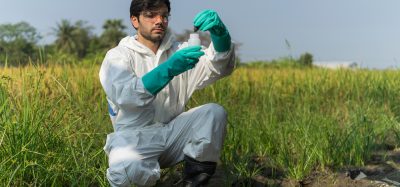Food safety incidents: lessons from the past and anticipating the future
Posted: 14 October 2016 | Andrew Hudson, Head of Food Microbiology, Fera Science Ltd; Miles Thomas, Head of Knowledge Solutions, Fera Science Ltd; Paul Brereton, Co-ordinator for Agri-Food Research, Fera Science Ltd | No comments yet
Experts from Fera Science discuss how we might best anticipate emerging risks in food safety…


The ability to anticipate and mitigate emerging risks has always been of extreme interest to all stakeholders in the food supply chain. The Rapid Alert Systems for Food and Feed (RASFF) was created and implemented in European legislation and provides notifications to 28 EU national food safety authorities, the Commission, EFSA, ESA, Norway, Liechtenstein, Iceland and Switzerland of food risks soon after they arise and can lead to more timely and co-ordinated action throughout Europe1. Analysis of food incident data by HorizonScan since 2006 shows that food safety risks (microbiological or chemical) comprised the vast majority (90%) of formal notifications while issues around headline-grabbing food fraud accounted for only 6.1%. While most of the food safety risks are well known they are usually difficult to predict. As a result, large amounts of resources are spent in mitigation ‘post incident’ (recalls, investigations, prosecution, medical care) due to the inability to anticipate the risk. A focus of scientists at Fera is how to provide the food industry with better tools to identify these risks before they become incidents.
The ability to predict the next food incident would be of immense benefit to everyone. Brands would not be compromised, consumers would be protected and criminals put out of business. Unfortunately accurate prediction is not yet possible, but by being very aware of both the history and current state of the food landscape it is possible to make projections and implement risk management actions to head off potential problems in an informed way. We provide some examples of varying notoriety to illustrate this assertion and speculate on some key warning signs of nasty surprises that could occur in the future.
There are several electronic warning systems providing information about food issues as they occur. For example, it is possible to subscribe to the UK FSA and be emailed breaking alerts on food recalls and other topical events. However, to get the full picture (or as full as it gets) it would be necessary to subscribe to dozens of similar sources of information of various reliability and in numerous languages. Staff at Fera have access to HorizonScan which consolidates food alerts from around the world on a daily basis and looks for trends and anomalies as a means of informing on emerging risks.
It is probably fair to say that most microbiological incidents are rarely entirely bolts from the blue. For example, the number of outbreak reports involving unpasteurised milk and its products are legion; the risk is well known2. Real surprises can occur, as shown by the outbreak of listeriosis linked to contaminated caramel apples in America and Canada3, but they don’t happen often. Flurries of reports can presage a rare contamination issue that has the potential to cause disease or recalls, and tracking reporting patterns can allow the astute food safety manager to head off a potential problem for the company. As an example, in early 2016 there were numerous reports of isolations of Salmonella from pistachio nuts in the USA and consequent recalls. This was flagged in HorizonScan with a warning owing to a seven-fold increase of detections compared to the historical rate (an average of one a year since 2009). Reports started to appear in early February and continued until late March. On the 9th and 10th of March the almost inevitable outbreak of salmonellosis occurred where the vehicle involved was pistachio nuts4 . It seems likely that the initial detections were the result of a planned survey of nuts as the FDA had signalled work on tree nut risks in July 2013. While no indication as to the prevalence of Salmonella in pistachios could be inferred, the number of reports compared to the historic average suggested that the food/hazard combination of Salmonella in pistachios merited attention in terms of due diligence testing to protect brand and consumers alike.
The addition of melamine (used here as a shorthand for melamine and similar molecules) to increase the measurable protein content of milk was a widely publicised issue at the time (2008) due to the large scale of health problems occurring in China where 294,000 children became sick and at least six infants died5. However, with the aid of 20:20 hindsight, could something like this have been foreseen? If melamine had been used to increase the apparent protein concentration in one product, could it reasonably have been predicted that the same fraud might occur to bolster protein contents in other foods whose price is linked to that measurement? It is possible; as there were well-documented cases of disease and deaths in North American dogs the year before that were shown to be caused by the addition of melamine to proteinaceous dog food ingredients originating from China. Looking back further it is possible that similar events had occurred in previous years in other countries, as judged by the patterns of disease, but the connection to melamine was not made. The incidents were enabled, to an extent, by the method used to measure protein as it did not in fact measure protein! Instead the method detected total nitrogen so that the addition of high nitrogen compounds could fool the system.


Figure 1: Pattern of reports concerning Sumac since 2004
Given access to data extending back for 15 years it is possible to look at recurrent problems. An example is the adulteration of Sumac with Sudan dyes and other compounds. An examination of the historical reports shows that detections spike (four in 2004; three in 2007; three in 2011 and two in 2015) and fall back to zero (during all other years between 2005 and 2014 – see Figure 1). Therefore, with detections spiking every two to three years, is it possible to conclude that fraudsters wait for the fuss to die down before having another go? The information suggests that businesses need to have constant vigilance in respect of this particular commodity.
Again looking at historical data, but with something of a contrast, there have been dozens of reports of detections of Salmonella in imported betel leaves going back to 2010. On face value, detections have become less associated with betel leaves imported from Bangladesh and have been replaced over the last few years with those associated with imports from India (Figure 2, page 37) and, more recently, Malaysia. Following a visit in 2011 between the EU Food and Veterinary Office, the Bangladesh National Plant Protection Organisation and the Bangladesh Betel Leaf Exporters Association, new measures have been introduced to enable the export of pathogen-free betel leaves to the EU6. It’s therefore clear that there is an issue with Salmonella and betel leaves, but associations with exporting countries are less easy to make where other factors are in play.


Figure 2: Reports of issues with imported betel leaves. Note that the there are dangers in taking the data at face value, for example it is possible
Probably the most notorious incident of food fraud in the UK is the now infamous ‘Horsegate’ saga. This was out and out fraud, involving the substitution of a cheap meat for a more expensive one. It was an involved multinational affair and served to demonstrate just how complex the food chain is. The damage to the reputation of companies and brands that became associated with the incident was immediate. For example, shares in Tesco fell 5% in the following three months. Methods for the detection of different meat species were available, but who would have thought of testing beef burgers for horse? There are some reports of suspected fraud prior to January 2013, but too few to ring alarm bells. The real problem is that the substitute meat could theoretically have originated from many animals; donkey, kangaroo, who knows? Due diligence testing therefore needs to focus on identifying, for example, ‘non-beef’ in a product that is meant to be 100% beef. That is a more complex process than simply testing for a list of animal species that might be present.
In response to recommendations from the Elliott Review into ‘the Integrity and Assurance of Food Supply Networks’ which followed ‘Horsegate’7 the UK FSA has recently established the National Food Crime unit, which aims to bring criminals to justice and protect both the legitimate food industry and the consumer8. Industry have set up the Food Industry Intelligence network that aims to better facilitate the sharing of (sensitive) information on risks to the food chain. At a European Level DG SANTE have set up a Food Fraud Network that provides a secure environment for Member States to share intelligence on food fraud risks and DG Research are funding a pan-European project that has been set up to increase capabilities in food fraud detection and prevention9 .
So, what next? It is not possible to predict the future and so we must use the information that is currently available to make intelligent guesses about what problems lie ahead. Tools such as HorizonScan10,11 rapidly capture issues as they occur and provide useful information for making risk-based decisions. These may be derived from i) issues previously unseen in the fifteen years’ data held in HorizonScan; ii) significant recent increases in reporting of issues above what is normally encountered; iii) anticipating the occurrence of an issue in a commodity closely related to one that is already known to be a problem and iv) anticipating an issue in a commodity from one country where the issue is already recognised in that commodity from another country. Currently many of the ‘Global increasing issues’ reflect detections of undeclared allergens, which are important, but nothing new. First on the list is a spurt of detections of veterinary drugs in honey, reported by the Czech Republic. Fourth on the list is the presence of mercury in various types of Mediterranean fish. Are these reports the start of something big, or just blips?


Figure 3: All issues in HorizonScan since 2006


Figure 4: Fraud Issues in HorizonScan
Of particular interest to microbiologists are the recent recalls and possible cases involving Listeria monocytogenes in the USA (currently) flagged red in HorizonScan). A recent example concerns recalls of sunflower seeds, a food on which L. monocytogenes should not grow and so one on which a tolerance (100/g) of the organism is acceptable to some jurisdictions. At the same time there is a recall of frozen fruit and veg, on which L. monocytogenes also cannot grow while frozen12, and an apparent association with cases of disease. These are both very odd, and so a question to ponder here might be whether listeriosis is more frequently associated with hitherto labelled ‘low risk’ foods than previously thought and that, perhaps, this insight has been gained through improved surveillance systems and traceback methods. If that is the case, then risk-based due diligence testing for L. monocytogenes will need to be re-thought.
Food incidents of the future will arise via a number of routes: climatic changes resulting in shortages; gaps in testing methods identified by the unscrupulous; shifts in the economics of the food supply; and, sometimes, as a complete surprise. In the case of fraud, opportunities to sell low cost foods at premium prices will endure. For example, is it possible that opportunities for skulduggery will arise from poor harvests in both vanilla13 and maple syrup14 – high value foods that could tempt the unscrupulous to blend them with synthetic vanilla or sugar solutions, respectively, ‘to meet demand’. Advancements in scientific methodologies will provide information about hazards in foods that were previously unknown, as well as distinguishing abnormal food profiles from normal – so revealing change. This non-targeted approach is being used at Fera to identify new threats more quickly and efficiently. In tandem, our emerging risk group is developing ‘big data’ solutions that will amalgamate several sources of information (macroeconomic, digital media, etc.) in order to better identify potential new food risks.
References
- European Commission. The rapid alert system for food and feed 2015 annual report.
- Oliver SP, Boor KJ, Murphy SC, Murinda SE. Food safety hazards associated with consumption of raw milk. Foodborne Pathogens and Disease 2009;6(7):793-806
- Centers for Disease Control and Prevention. Multistate outbreak of listeriosis linked to…
- Centers for Disease Control and Prevention. Multistate outbreak of Salmonella Montevideo infections…
- Gossner CM-E, Schlundt J, Ben Embarek P, Hird S, Lo-Fo-Wong D, Beltran JJO, et al. The Melamine Incident: Implications for International Food and Feed Safety. Environmental Health Perspectives 2009;117(12):1803-1808
- Anonymous. Final report of an audit carried out in Bangladesh from 30 January to 7 February 2013 in order to evaluate the system of official controls for export of plants to the European Union: DG (SANCO); 2013. Report No.: 2013-6815-Final
- https://www.gov.uk/government/uploads/system/uploads…
- https://www.food.gov.uk/enforcement/the-national-food-crime-unit
- https://secure.fera.defra.gov.uk/foodintegrity/index.cfm
- Anonymous. HorizonScan early warning system helps keep brands safe. Innovations in Food Technology August 2013
- Anonymous. Monitoring food risks. The analytical scientist July 2013
- http://www.fda.gov/Safety/Recalls/ucm498841.html
- http://www.eurovanille.com/en/our-mission/vanilla-market-report.html
- http://www.ctvnews.ca/business/maple-syrup-producers-worried-warm…
About the authors
Andrew Hudson has a BSc (Hons) from Bristol University and doctorate from the University of Waikato in New Zealand. His initial foray into food microbiology was as a microbiologist at the Meat Industry Research Institute of New Zealand. Later, he joined NZ’s Institute of Environmental Science and Research where he was a science leader in Food Safety. The main focus was the control of foodborne pathogens using bacteriophages. He was also involved in various other projects with particular focus on Campylobacter, pathogenic Escherichia coli, Listeria and Yersinia. In 2014 he moved back to the UK to take up his present role at Fera as Head of Microbiology in Food Quality and Safety. In 2015 Andrew became a member the Institute for Agri-Food Research and Innovation which is a joint enterprise between Fera and Newcastle University. He is a Fellow of both the Institute of Food Science and Technology, and the New Zealand equivalent. Andrew has published more than 90 peer-reviewed papers, reviews and book chapters on various topics in food microbiology.
Miles Thomas has a BSc (Hons) in Agricultural Botany and a PhD in Plant Pathology from the University of Wales. His initial work on disease control in grasses and cereals led to the development of database handling systems for large data sets, and after running the analysis of the Government’s pesticide usage surveys for several years, went on to run the team. For some years he worked closely with OECD and the EU in training accession member states and was recognised as a world expert in pesticide usage monitoring. For over 15 years he has led the development in Fera of webbased knowledge management systems, firstly with LIAISON, a sophisticated online database of UK pesticide approvals, followed by FC24, an on-line database of EU regulations covering all contaminants and residues. A growing interest in food safety and integrity finally led to the development of HorizonScan.
Paul Brereton is Science Lead for Agri-food Research at Fera based in York, UK. A senior scientist working at science-policy interface, he has over 30 years’ experience of applied research in the area of food safety and quality. Paul has co-ordinated two of the world’s largest research projects in the area of food authenticity and traceability: the €20M TRACE project (Tracing the origin of food) and currently FOODINTEGRITY a €12M EU sponsored research project that aims to address, at a European level, many of the gaps identified during the recent horsemeat incident. He has published over 70 peer reviewed papers and articles on food safety and quality and recently edited the book ‘New analytical approaches for verifying the origin of food’ (Woodhead/Elsevier). In addition to his Fera role, he has also taken up a position at the Institute of Agri-Food Research and Innovation (IAFRI) a joint Institute between University of Newcastle and Fera that aims to deliver innovation in research across the agri-food chain.









